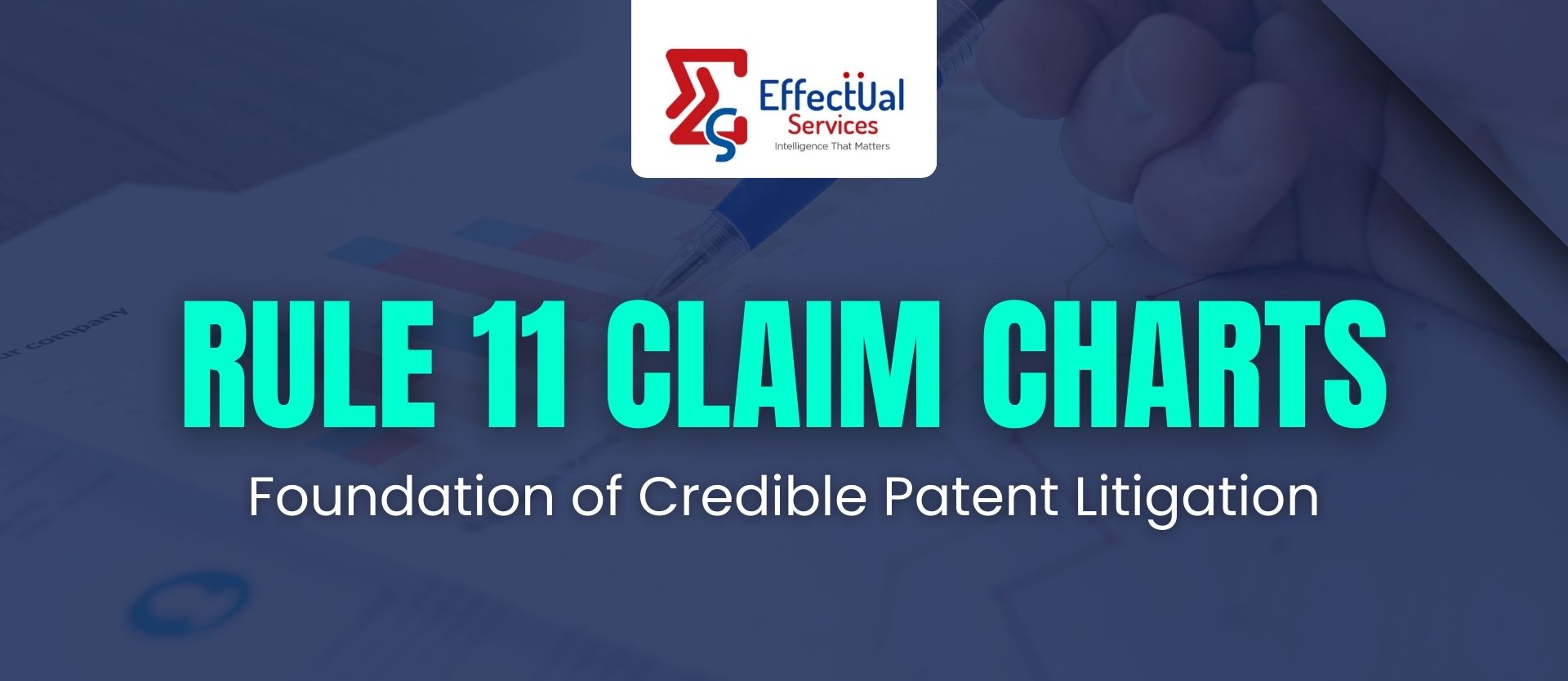Rule 11 Claim Charts: Foundation of Credible Patent Litigation

The Importance of Rule 11 Claim Charts
In U.S. patent litigation, Rule 11 claim charts are not just a formality - they're a solemn obligation. Attorneys are obligated under Rule 11 of the Federal Rules of Civil Procedure to certify that proper investigation supports any legal claim presented in court. In patent litigation, this would be that prior to the filing of a lawsuit, the plaintiff would need to do the necessary research to establish that the accused product or process does infringe the claimed patent.
Why Rule 11 Claim Charts Matter
Claim charts have become a useful, frequently required method of linking every element of a patent claim to the analogous feature of an accused product. Yet not every claim chart is created equal. A poorly drafted Rule 11 chart can turn against you, resulting in sanctions, dismissal of the case, or impaired credibility in court.
What is a Rule 11 Claim Chart?
A Rule 11 claim chart is a side-by-side comparison. It has on one side the language of the patent claim, element by element. On the other side, it has concrete specifics - screenshots, product manuals, technical papers, or observations—that demonstrate how each claim element appears in the accused product.
Establishing Reasonable Basis and Legal Diligence with Rule 11 Claim Charts
The goal is to show that, at the time of filing the lawsuit, the attorney and the client had a reasonable factual basis to assert infringement. It’s not about proving the case at this point - it’s about showing that the case isn’t baseless.
The courts do not take Rule 11 lightly. When a party does not conduct thorough pre-filing research on a lawsuit, it might be deemed frivolous, and sanctions can be the result. Judges have dismissed suits and imposed penalties when it is obvious that the plaintiff did not research thoroughly or, worse, did not comprehend the technology they were suing about.
A well-thought-out Rule 11 claim chart shows the court (and opposing party) that the plaintiff has done his homework. It's not just a box to check - it's evidence of professionalism, prudence, and legal compliance. In creating Rule 11 Claim Charts, the following must be followed:
Steps to Create a Strong Rule 11 Claim Chart
1. Read Patent and Claims Thoroughly Before Mapping Anything to a Product. Begin by breaking down the claims and reading them word for word, what it means when spoken. Read the spec, review the prosecution history, and determine if any of the claim terms are up for construction.
2. It's absolutely essential to research how the offending product or service works. This might involve looking at public information, user manuals, reverse engineering, or even trying the product out.
3. All arguments need to be supported by facts. Use diagrams, screen shots, annotated photos, or exact quotes from technical documentation wherever possible.
4. All limitations in the claim must be reasoned out in the chart. Leaving difficult or unclear points or sweeping multiple limitations and failing to analyze them adequately can weaken the argument and result in sanctions.
Conclusion
Rule 11 claim charts aren't optional - they're a pillar of good patent litigation practice. They demand careful analysis, care in detail, and true insight into both the patent and the alleged infringing product. Executed correctly, they solidify your position and show credibility. Executed incorrectly, they can destroy your case before trial. Effectual Services has performed around 1700+ projects related to Rule 11/337 investigation in a year.
Solutions Driving Innovation & Intelligence
Enabling Fortune 500's, R&D Giants, Law firms, Universities, Research institutes & SME's Around The Globe Gather Intelligence That
Protects and Nurtures Innovation Through a Team of 250+ Techno Legal Professionals.

